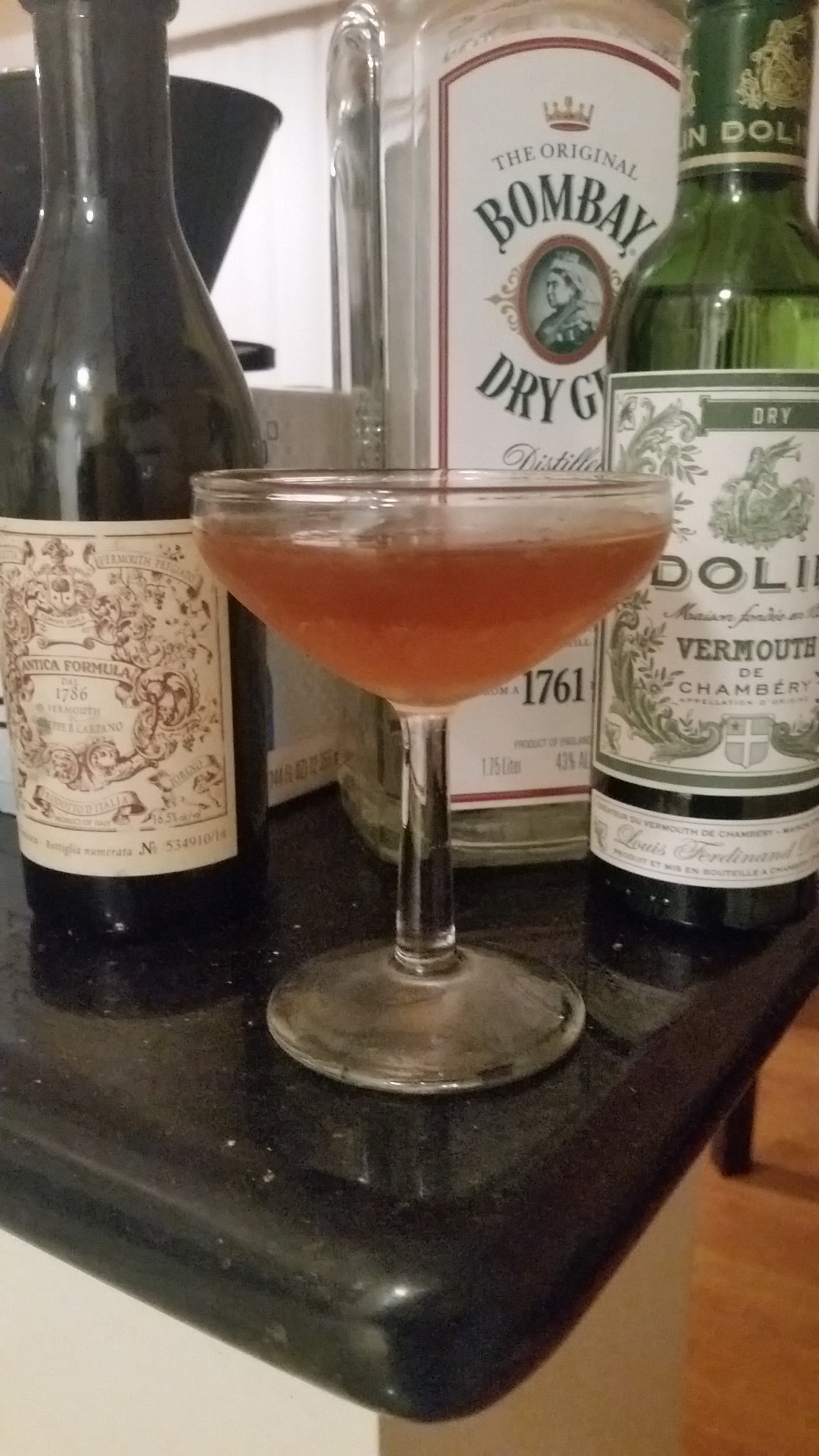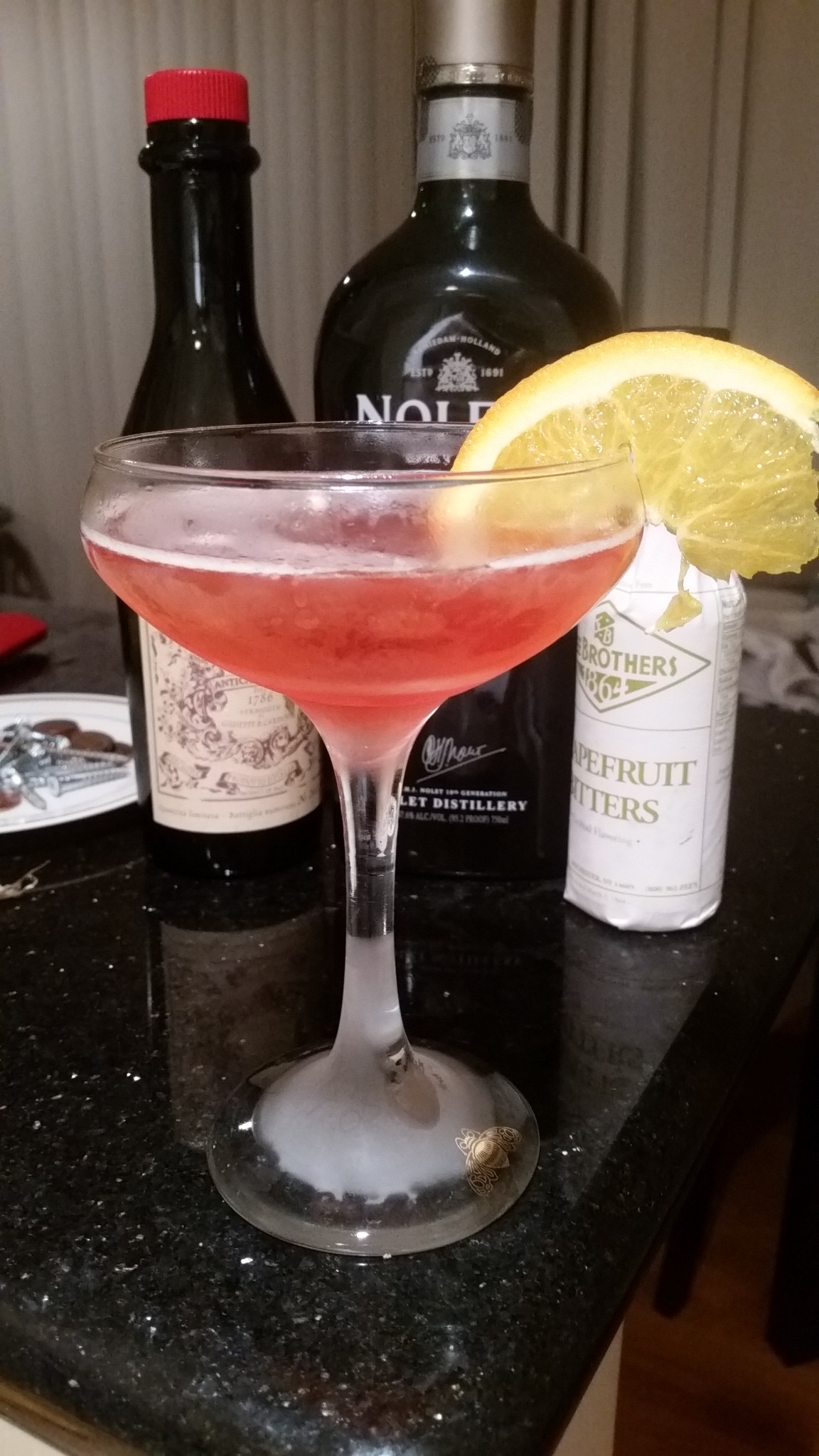Drink of the Week: The Horsecar
 The holidays are coming but there’s a limit to how many sweet and rich ingredients a person can or should imbibe. That’s especially true if, like me, you’re thinking about appropriate holiday cocktails while dealing with a bit of a lifelong weight issue — these posts haven’t exactly helped! — and also trying to prepare for upcoming celebratory indulgences. So, while you’re definitely free to make the more traditional holiday cocktails I’ve offered in the past, this week, I took a complete break from the flipping excess of last week’s beverage and went with something simple, and only a little bit sweet.
The holidays are coming but there’s a limit to how many sweet and rich ingredients a person can or should imbibe. That’s especially true if, like me, you’re thinking about appropriate holiday cocktails while dealing with a bit of a lifelong weight issue — these posts haven’t exactly helped! — and also trying to prepare for upcoming celebratory indulgences. So, while you’re definitely free to make the more traditional holiday cocktails I’ve offered in the past, this week, I took a complete break from the flipping excess of last week’s beverage and went with something simple, and only a little bit sweet.
The Horsecar is a drink of uncertain origin as far as I can tell, but Saveur tells us it was featured in a 1956 cocktail book issued by our men’s magazine forebears over at Esquire. It’s a definite relative of the various Perfect Manhattan-esque drinks I’ve been messing with lately, combining both sweet and dry vermouths. And, yes, it’s a near replica of the Jumbo — which, by absolute sheer coincidence, was the featured drink here just barely under two years ago by about three days. Still there’s one key difference. See if you can spot it.
The Horsecar
1 ounce rye whiskey
1 ounce sweet vermouth
1 ounce dry vermouth
1 dash orange bitters
1 cocktail cherry (garnish)
Not a lot of surprises here. Pour the rye, vermouths, and bitters into a cocktail shaker and mixing glass. Shake or stir, and then strain into a chilled cocktail glass. Contemplate the millions of subtle variations possible when you combine liquids in differing proportions.
****
Okay, so, like the Jumbo, the Horsecar is good for those who love Manhattans, but maybe sometimes find the standard version too high either in sweet vermouth or too heavy on the whiskey. The difference between the drinks is that the classic Jumbo calls for Peychaud’s bitters, which have an almost candy-like flavor, and the Horsecar calls for orange bitters, my frequent personal choice when I’m making Perfect Manhattans. (I understand that you can also make Horsecars with Angostura-style aromatic bitters but, to be fair, that cocktail should probably be given it’s own name.)
My rye brands this time around were Rittenhouse, Old Overholt, Bulleit, and Alberta Dark Rye. My dry vermouths were Dolin’s and Martinis. My sweet vermouths were Martini, Vya, Carpano Antica, and, experimenting with a new brand, Cocchi Vermouth di Torino. The results were uniformly very nice, with floral and sweet qualities predominating. Probably the single most drinkable version contained Old Overholt — not really a personal favorite — Dolins and Carpano Antica. That version would have been the height of craft cocktail bar orthodoxy, except I shook it instead of stirring. Yes, it was clouded with ice crystals but it was also very easy on the palette without being boring.
I liked the Horsecar stirred as well. Those drinks were definitely a bit bolder in flavor, and could also be quite lovely. The only one that didn’t seem to work as well contained Alberta Dark Rye; it’s a brand I like quite a bit, but it’s a bit of a whiskey outlier and actually contains 1 percent sherry wine. Sometimes the dark horse really does come in last.
You can follow us on Twitter and Facebook for content updates. Also, sign up for our email list for weekly updates and check us out on Google+ as well.
Posted in: Food & Drink, Lifestyle, Vices
Tags: Alberta, Angostura Bitters, Carpano Antica, cocktails, Drink of the Week, Happy Hour, Martini Sweet Vermouth, Rittenhouse Rye, the Horsecar, the Jumbo

 If you don’t know a persimmon from a papaya, don’t feel too bad. I had not the vaguest idea of what the darn things tasted like until our in-house guinea pig here at Drink of the Week Manor brought in a gigantic box of the somewhat obscure fruit freshly picked by relatives.
If you don’t know a persimmon from a papaya, don’t feel too bad. I had not the vaguest idea of what the darn things tasted like until our in-house guinea pig here at Drink of the Week Manor brought in a gigantic box of the somewhat obscure fruit freshly picked by relatives. Let’s get this out of the way: the Perfect Cocktail is not the perfect cocktail, but you already knew that. It is, however, not one bit bad.
Let’s get this out of the way: the Perfect Cocktail is not the perfect cocktail, but you already knew that. It is, however, not one bit bad. Gin gets plenty of respect among cocktail aficionados — certainly more than vodka — but it’s still mainly thought of as a something best enjoyed in some kind of mixed drink, whether it’s as unvarnished as a very dry
Gin gets plenty of respect among cocktail aficionados — certainly more than vodka — but it’s still mainly thought of as a something best enjoyed in some kind of mixed drink, whether it’s as unvarnished as a very dry  I sing now, for the umpteenth time, of the raw egg white, feared by many, adored by
I sing now, for the umpteenth time, of the raw egg white, feared by many, adored by 








